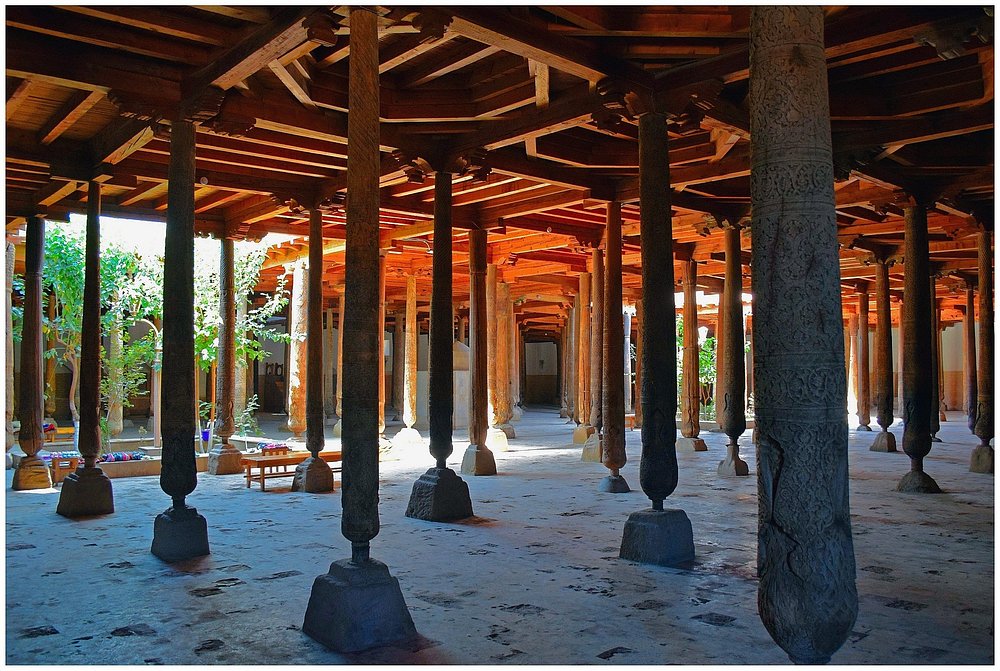The unique Juma Mosque dates back to the 10th century, although it has been rebuilt and restored at various times, including a major restoration in the 1788. The standout features of the mosque are the flat roof supported by 212 wooden (elm) columns arranged in 17 rows, the innovative use of natural light, and the 42-meter minaret standing alongside. Most of the wooden columns are not original, but several were salvaged and repurposed in the various renovations over the years. An interesting method is used to protect the wooden columns from rot by placing them on a stone base with the small supporting wooden end surrounded with camel wool to draw off moisture from the wood.

It's said that this design originated from an ancient Arab mosque. The most notable feature of Arab-style mosques is the large number of columns. Among them, 6 or 7 columns date back to the original 10th - century mosque. The current building was constructed in the 18th century. Once you enter the mosque, you can climb the dim stairway to the 47 - meter - high Juma Minaret.
The term Juma originates from the Islamic congregational prayer, also known as Friday Prayer. It is a weekly religious ceremony for Muslims held on Friday afternoons. As such, it can also be referred to as the Friday Mosque. This ritual holds a significant position in Islam.



































